
Sysex Librarian
We all love free software right?!
Here’s something worth having if you don’t already, an app that's invaluable in your world of trouble shooting (or avoiding it!)
'Sysex Librarian' by Snoize - https://www.snoize.com/sysexlibrarian/
Sysex Librarian is a free utility, which as the name suggests, allows simple backup of Sysex (System Exclusive) data .... (the manufacturer specific data that defines a particular MIDI device).
Whereas MIDI messages are common to all MIDI enabled devices and determine how devices respond or send MIDI to a common standard, Sysex allows manufacturers to send info specific to their own device(s) like the way its patch memory is stored for example.
Why’s that so good? Well, nearly all MIDI keyboards and drum machines allow presets to be backed up externally using Sysex messages, essential to safe guard valuable sounds. Internal batteries often retain patches when a device is turned off but these don’t last forever, so backing up those sounds you took so long to make, is time well spent and will save on 'heartache' further down the line.
If you are on tour and a keyboard breaks, having sysex backups of the sound patches, internal global setup and sequencer or song data means you can potentially hire in a new device, load up the saved patches and ‘go’ without impact to the gig.
In a studio context you can do the same, with Sysex patches even residing in a DAW session as a safety, that contains the right sounds/setups for that session. When re-visiting old material especially, this can be useful as the contents of a MIDI device may have changed over time or those patches might have been deleted. A quick Sysex ‘dump’ back into the unit gets you up and running again, but Sysex Librarian makes this whole process much easier and also has controls to allow for the varied internal processing speeds of some devices, especially older ones, that can be ‘temperamental’ when dealing with Sysex.
In Use
With a connected MIDI interface to your computer you are setup for Sysex sending and receiving with Sysex librarian.
Sysex librarians’ front end is simple ..
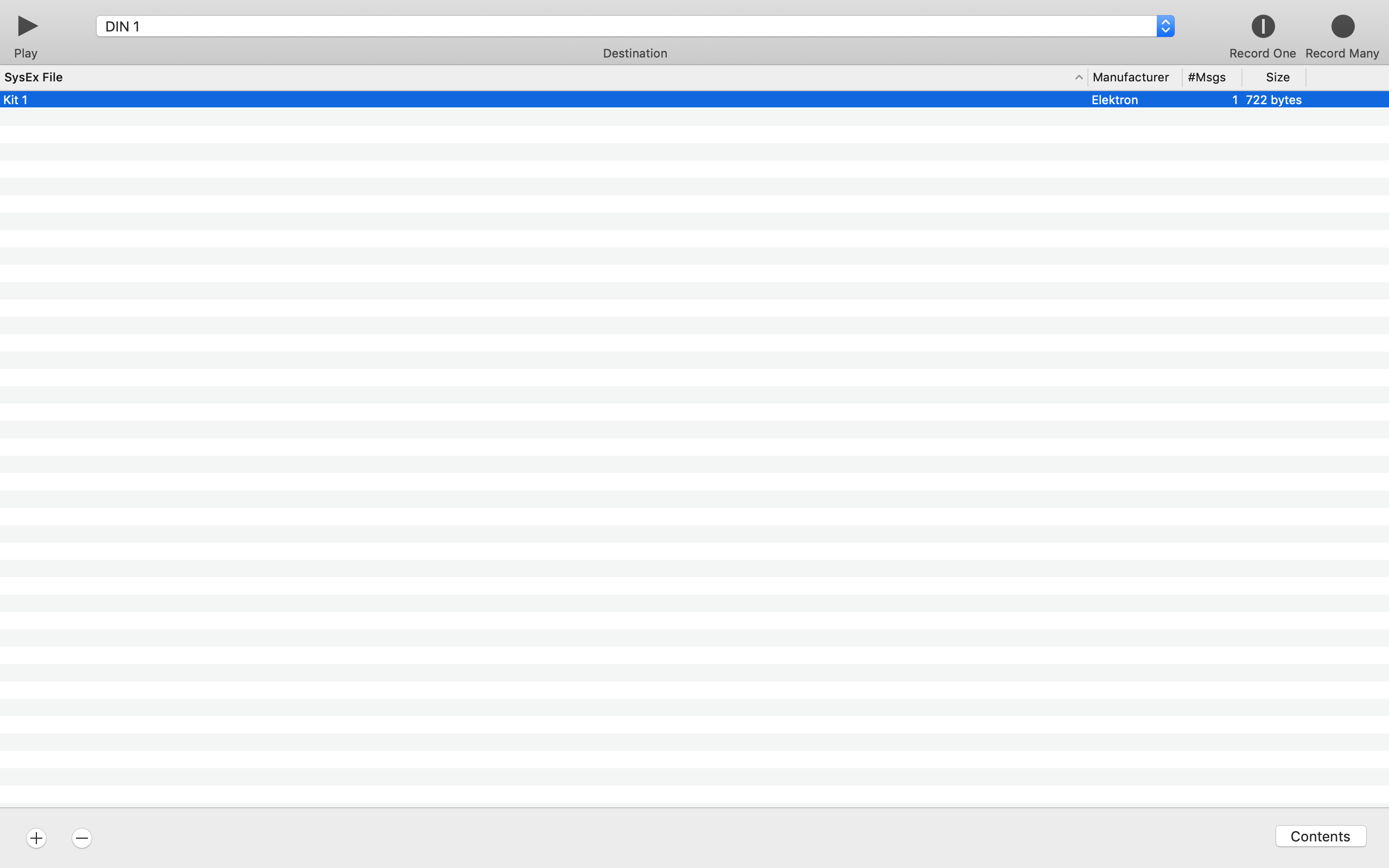 You see a list of existing / saved Sysex messages running down the page and a selection tab where you choose a connected MIDI interface for the transmission and reception of messages in and out of the software.
You see a list of existing / saved Sysex messages running down the page and a selection tab where you choose a connected MIDI interface for the transmission and reception of messages in and out of the software.
Using DIN connections will probably get the best results here as the original MIDI spec is a pretty slow protocol and sending/receiving system messages can at times be a bit hit or miss. Sending down a USB cable to or from a device may well work, but transmission speed could be incorrect due to the difference in connection type. Personally I’ve had mixed results using USB and find that using the DIN sockets on my device and interface, gives the best chance of success. Also some older MIDI devices may well require a MIDI ‘handshake’ before Sysex comms will work both ways too. Handshake is the connection of both IN and OUT of the device, to the receiving or transmitting Sysex Librarian.
Another useful feature of Sysex Librarian is that it has a 'transmit speed throttle' in the preferences area, so that older MIDI devices that maybe process data slower can be catered for by sending MIDI to them at a slower rate set here.
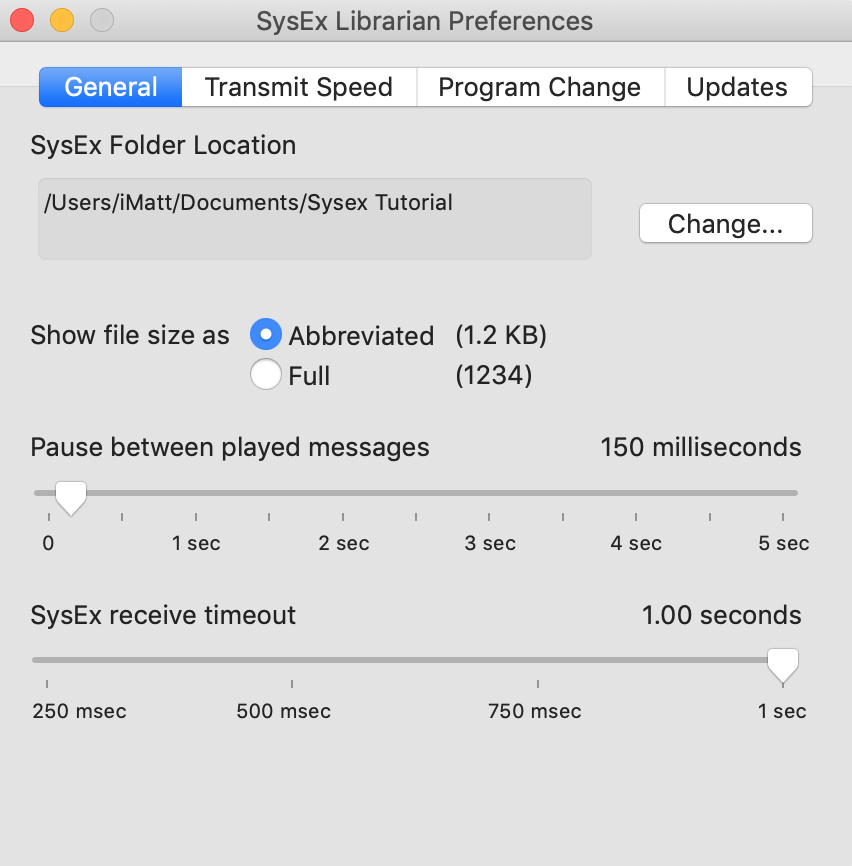
Saving a sysex dump is a simple as choosing the MIDI input you’d like to use on your computer with the tab selector ..

and then deciding if you are want to save a single message or multiple messages using the 'Record One' and 'Record Many' options, in the top right hand of the screen.
When you choose either of them, you’ll be greeted with a ‘waiting for sysex' dialogue as the software waits in anticipation for the dump you are sending from your MIDI device.
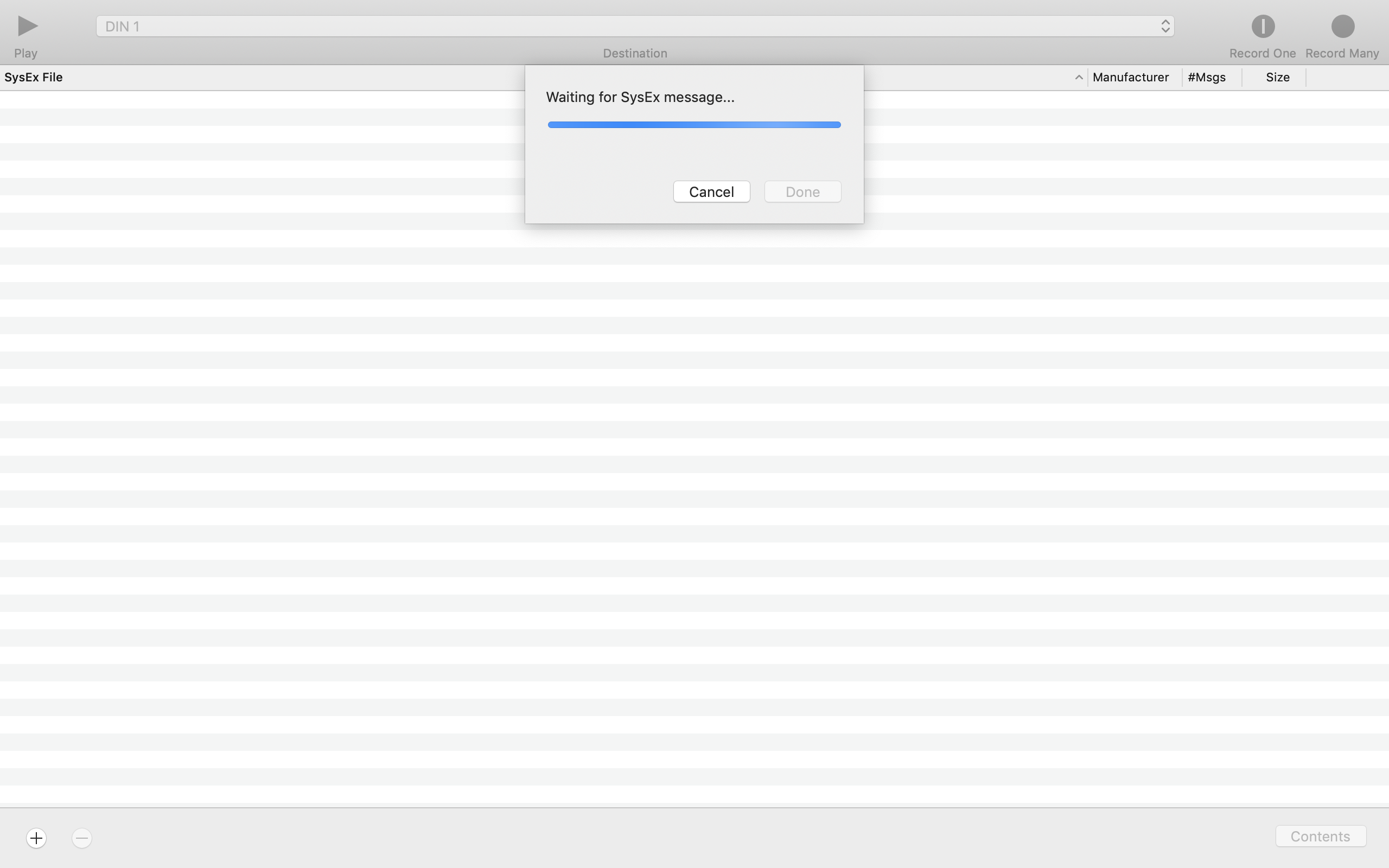
On completion of the dump you’ll see a new entry in the main window which you can name. Calling this the patch number or name of the patch and device it came from makes sense here when naming, as it will help ID it in a busy list.
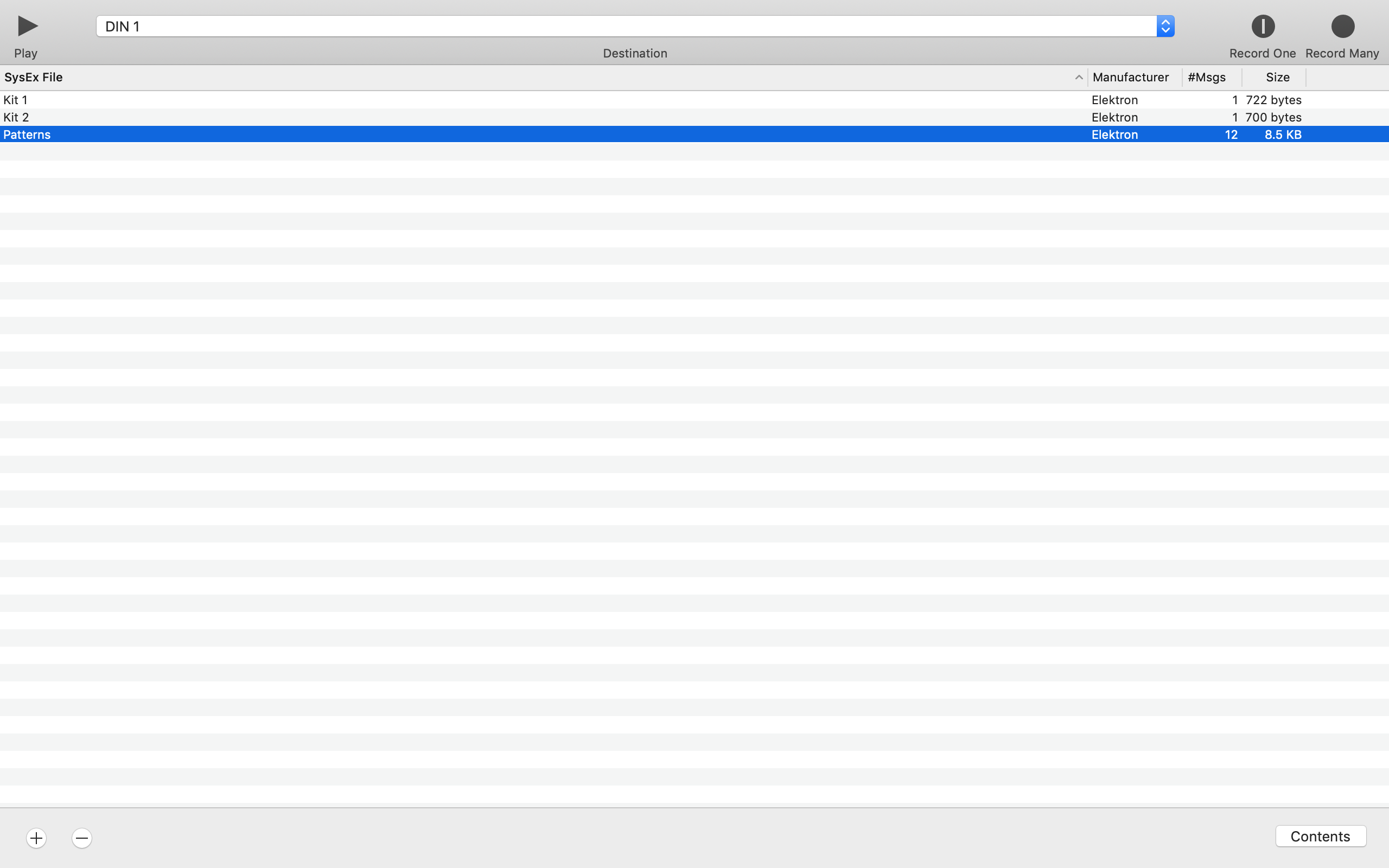
Playing back the saved preset to a device is a simple a operation too. Again you select the desired MIDI out port from the computer, using the selector tab.
Then choose the patch you’d like to send from the list on the Sysex main window and finally hit the play icon in the top left hand corner. You should see screen activity as the Sysex dump is played out of the software to your waiting device.
Its worth noting that some MIDI devices might need sysex comms turning on in a global menu before a recorded patch can be re-installed. There might also be other criteria you can set, like whether the device loads the saved patch back into the same memory slot or a new one.
When saving patches into Sysex Librarian the same can often be true, with most Sysex menus on MIDI devices residing in a 'Global' or 'Utility' type area in the MIDI device OS.
Here you may be able to specify things like whether you are saving the currently showing patch on a synth or an entire bank. For example, the Elektron Monomachine I have here allows Sysex saving of single pattern, patterns and kits, kits only, just global settings or the entire memory of the Monomachine, all selectable in a Global menu. Checking the manual of any Sysex enabled device should indicate what can be dumped and how. An entire or 'All' dump whilst covering everything might actually take a while to happen, so choosing the right option like a 'single patch' if that’s all you need, saves time.
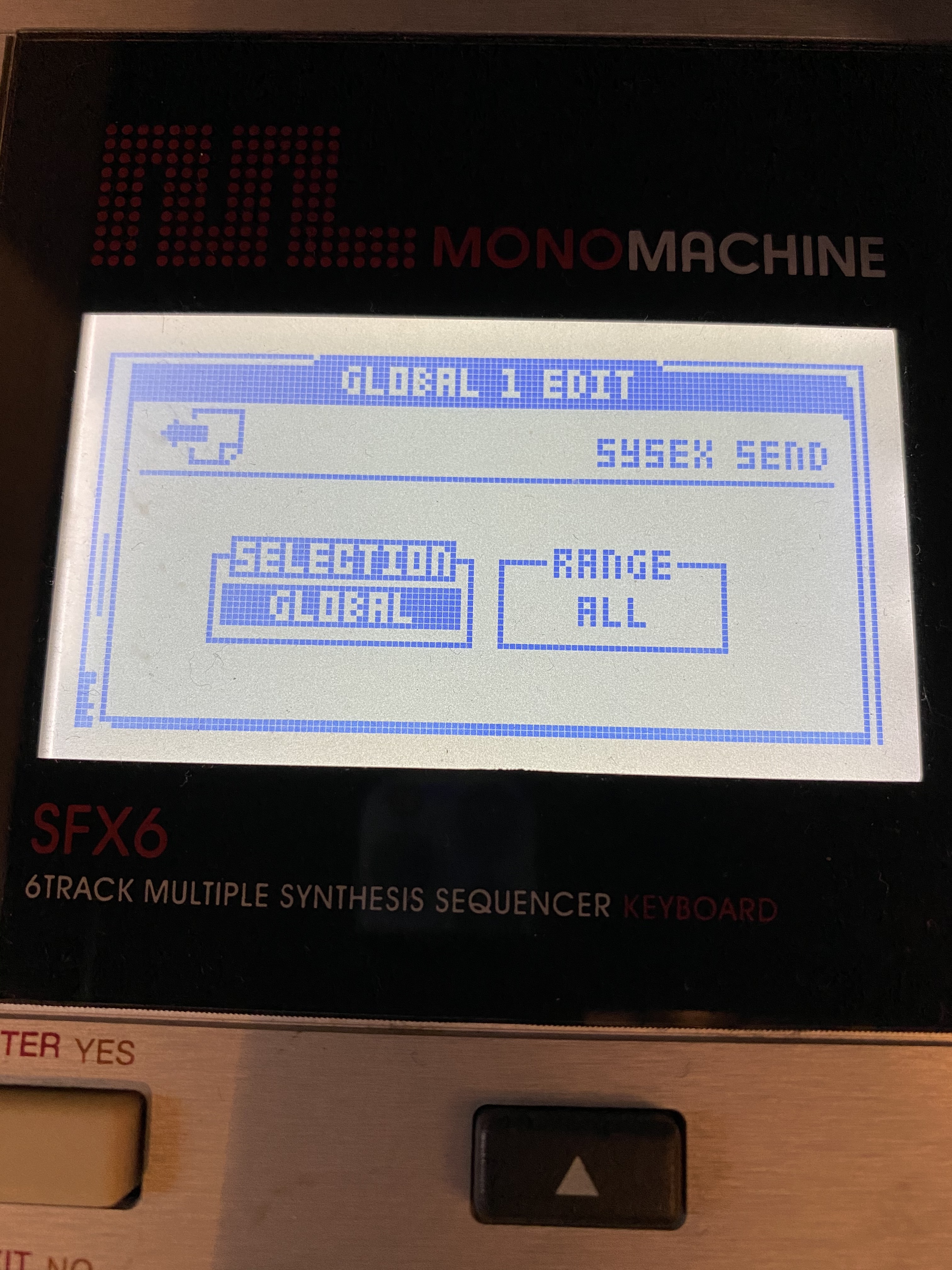
Other things to be aware of might be memory protect functions on your MIDI device. Your synth for example, might have memory protect enabled to safeguard overwriting presets. This will need disabling before a new sysex patch will be stored properly. Just don’t forget to set it back after dumping!!
Another issue that can sometimes happen, is that the MIDI interface you are using to pipe the Sysex in and out of the computer has Sysex filtering engaged. Interfaces like those by iConnectivity have elaborate routing and filtering capability, which in some circumstances you need. In the context of a Sysex dump though this could stop the message ever getting into or leaving the computer, so a quick visit to the control panel of the MIDI interface should show you if it has filtering on or off.
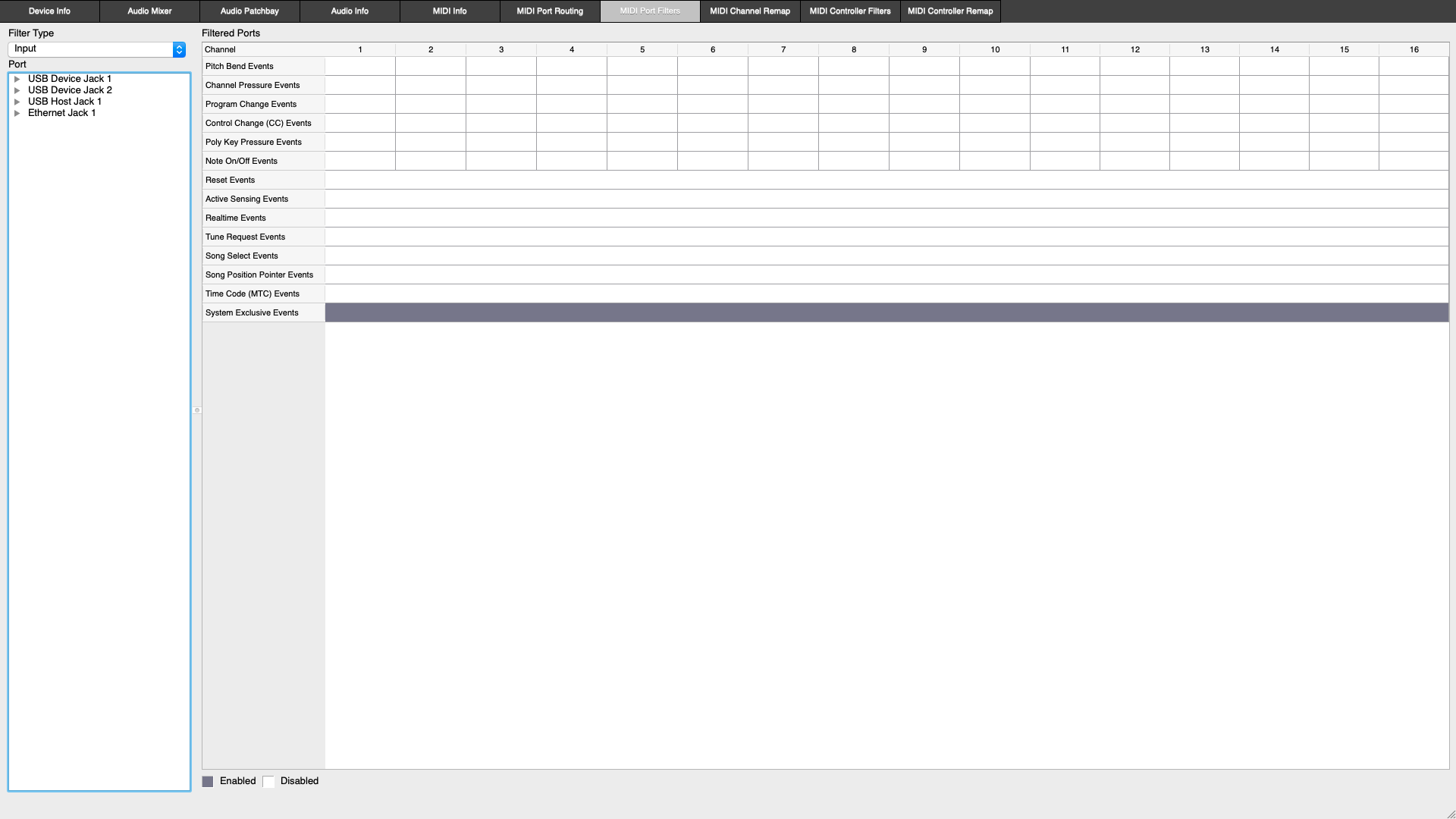
Conclusion
With Sysex Librarian installed on your computer, you have a safe storage area for presets and other Sysex settings, that could get you out of jail in certain circumstances. If you’ve ever deleted a really good preset on something by mistake and wished you could get it back, then sysex could be the hero that saves the day. Setting a small amount of time to one side to do patch dumps of your most important gear one evening could be time well spent!
Until next time ..
Need help backing up or getting Sysex working? .. visit https://musos.tech for direct 1:1 tech assistance from the MuSOS hive :)
//MuSOS - 'We Can Help'
